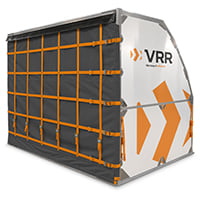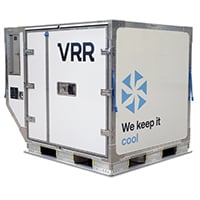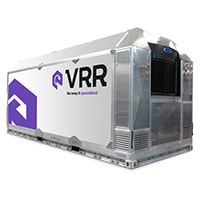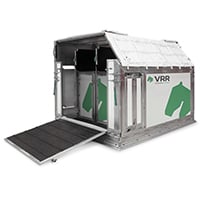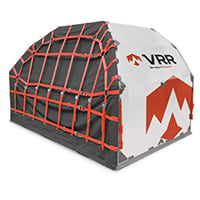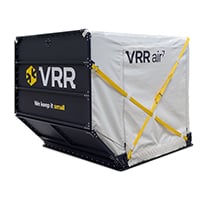Following hard on the heels of the new Dry Ice Container is another indispensable tool from the smart people at VRR: The TCU Reader Tool.
If you use a dry ice container to transport temperature-sensitive goods like perishable food, you know how important it is to check that the desired internal temperature was maintained for the entire journey. Otherwise, your cargo could be compromised without you or your customer realising.
Unfortunately, extracting what you want to know from the data log of the Temperature Control Unit (TCU) isn’t the easiest thing in the world. Until now, that is…
The temperature data log challenge
Shipping with dry ice—whether you use an active or passive container—is ideal if your container’s ambient temperature is constantly between 5 °C and 25 °C higher than your cargo’s set temperature. However, dry ice doesn’t stay solid forever. It gradually changes back into a gas, a process known as sublimation.
The rate of sublimation is affected by many factors, not least the amount of dry ice you put into the container’s bunker. It’s also affected by the type of container you use, the set point, the total shipment time, and the ambient temperature of each stage of the journey. With so many factors at play, confirming your container’s internal temperature throughout is essential.
Until now, all you could do is download a .CSV file. Reading data from such a file is tricky at the best of times, but what if you need to send that data to your customers as well?
The easy way to check your TCU data log
The TCU Reader Tool is VRR’s answer to the problem of interpreting data from a .CSV file. This free, online tool makes it simple for those using dry ice containers to read the TCU’s data log. It even produces an easy-to-read, one-page report that sets out all the essential temperature data.
All you have to do is enter some key information into the reader (located on VRR’s website, under Knowledge Centre) and upload the .CSV file. Key information includes:
- Type of container
- Container’s set temperature
- Minimum and maximum allowed temperatures for the cargo
- Type of batteries used
- Whether the cargo and/or container was pre-cooled
- Date and time parameters
Optional data includes amount of dry ice used, type of cargo transported and transport route.
User-friendly information that you can share with your customers
A graph is produced instantly showing the container’s temperature and battery voltage over the time/date range you selected. To receive the report, simply enter your email address. The report covers:
- Type of transport
- Temperature data log
- Shipment specifications
- Battery specifications
- Errors
The more optional data you enter, the more complete the report. What’s more, the presentation is simple and professional, so you can send it to your own customers with complete confidence.
The TCU Reader Tool is yet another time-saving device for those in the cool supply chain. Please try it out and let us know what you think.
